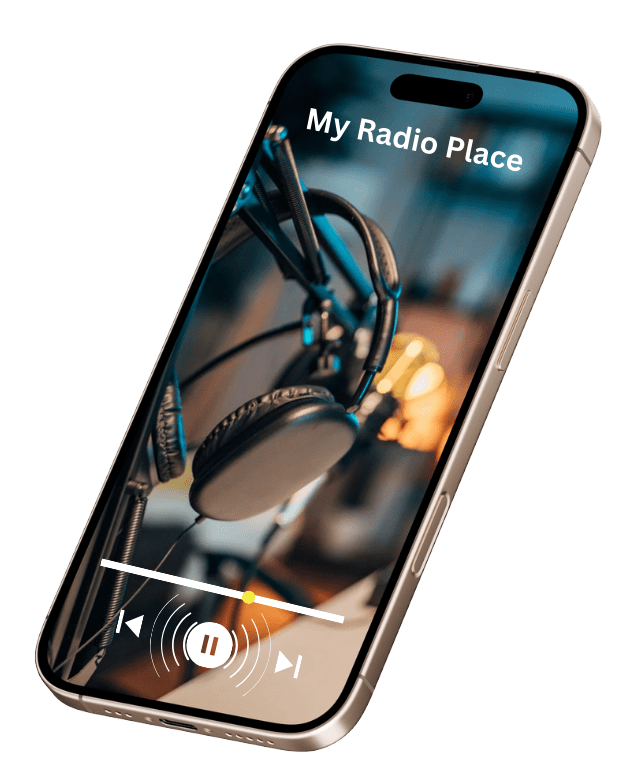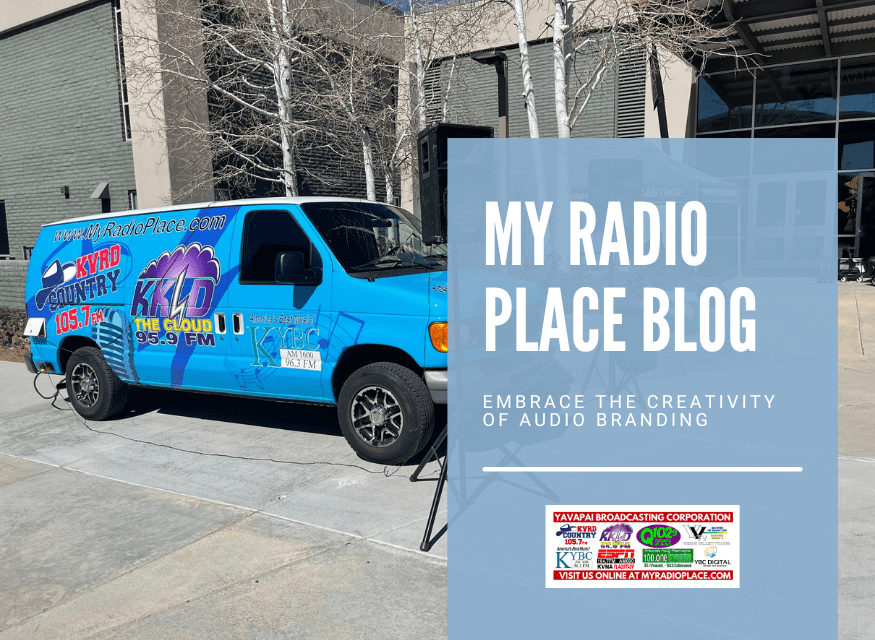Blog
The Role of Radio in Community Engagement: More Than Just Airwaves
In 2025, radio stations have evolved far beyond their traditional roles as mere broadcasters of music and news. They have become central pillars of community engagement, fostering connections and driving positive change in their local areas. Particularly in regions like Northern Arizona, radio stations are stepping up as community hubs, spearheading initiatives that strengthen community bonds and enhance local life.


Community-Centric Initiatives: Local Event Coverage
Radio stations are at the forefront of covering local events, ensuring that their audiences are kept in the loop about what’s happening in their neighborhoods. Whether it’s a local festival, a town hall meeting, or a charity fundraiser, radio brings these events to life, providing real-time updates and facilitating broader community participation. This coverage not only informs, but also encourages listeners to engage with their community actively.
Community Service Projects
Many radio stations have taken on the role of community organizers, launching service projects that address local needs. These initiatives range from food drives and environmental cleanups to educational programs and health awareness campaigns. By rallying their listeners to participate, radio stations help mobilize resources and volunteers, amplifying the impact of these projects.
Partnerships with Local Businesses and Charities
Collaboration is key to community engagement, and radio stations are forging strong partnerships with local businesses and charities. These partnerships often lead to co-hosted events, sponsorships, and promotional campaigns that benefit the community. For example, a partnership between a radio station and a local charity could lead to a fundraising event that raises significant funds for a worthy cause.
Statistics Highlighting Radio's Role
Increased Community Engagement: A recent survey revealed that 78% of listeners feel more connected to their community through local radio initiatives, underscoring the medium’s role in fostering engagement.
Volunteer Participation: Radio-led community projects have seen a 45% increase in volunteer participation compared to initiatives without media involvement, highlighting radio’s power to mobilize community action.
Business Visibility: Local businesses featured on radio experience a 30% increase in customer engagement, as reported by the Small Business Association, demonstrating radio’s effectiveness in promoting local commerce.
Charitable Contributions: Radio-hosted charity events raise 25% more funds than those without radio promotion, according to the National Philanthropic Trust, illustrating radio’s impact on charitable giving.
Listener Satisfaction: A study found 89% of listeners appreciate local radio’s role in community building, many citing it as their preferred source of local news and connection.
In 2025, radio stations are more than just broadcasters. They are vital community hubs that drive engagement, support local initiatives, and enhance society. By covering local events, organizing community service projects, and partnering with businesses and charities, radio stations strengthen community bonds and foster a sense of belonging. As these stations continue to innovate and expand their roles, they will remain indispensable pillars of community life, proving that the power of radio extends far beyond the airwaves.
Featured News
Category
Have Question?
Radio advertising can be a dynamic tool for elevating your brand. By understanding your audience, crafting compelling messages, and leveraging local connections, you can significantly enhance your brand presence and drive engagement.
Yavapai Broadcasting, known as “My Radio Place,” is a prominent radio station network that serves the vibrant communities of Yavapai County, Arizona. With a commitment to delivering high-quality programming, Yavapai Broadcasting offers a diverse range of content that caters to various interests and tastes.
Navajo Mountain Fire Response Impacts Lake Powell
Glen Canyon National Recreation Area, Utah, Ariz. – The Bridge Creek Fire, which is burning on Navajo Mountain approximately 5 miles from Lake Powell and Glen Canyon National Recreation Area, is located on Navajo Nation lands and is approximately 800 acres in size. Aircraft supporting firefighters on the incident will be using Lake Powell to refill buckets and tanks to aid in the firefighting effort. The aircraft using Lake Powell will consist of helicopters and fixed-wing Super Scoopers (amphibious aircraft). Glen Canyon rangers will be providing vessel support during aircraft operations on the lake. Until further notice, boaters are advised to remain toward the south wall of the canyon and to avoid Oak Bay as they are traversing between Dangling Rope to Rainbow Bridge. Recreation in the main channel should be limited to transit only. Boaters need to monitor marine radio channel 16. A temporary flight restriction is also in place for public safety during aerial operations. The Bureau of Indian Affairs Navajo Region Fire Management, Navajo Division of Public Safety, and Navajo Division of Emergency Management are leading the fire response, with Glen Canyon National Recreation Area Park Rangers supporting the aviation operation within the recreation area. For more information on the Bridge Creek Fire, please visit the BIA-Navajo Region Facebook Page. For updates on conditions and potential impacts to recreation on Lake Powell, visit Glen Canyon Alerts. https://www.nps.gov/glca/planyourvisit/conditions.htm
Coconino County Expanding Stage 2 Fire Restrictions
Coconino County will expand fire restrictions in coordination with the Kaibab National Forest. Stage 2 restrictions will take effect on Wednesday, June 18, 2025, at 6:00 p.m. for all unincorporated areas within the boundaries of the Williams Ranger District. At this time, unincorporated areas surrounding the Tusayan and North Kaibab Ranger Districts will remain outside of fire restrictions. This expansion joins the Coconino National Forest, City of Flagstaff, City of Sedona, State Lands, and all surrounding unincorporated areas of Coconino County. Fire restrictions are implemented to help prevent human-caused fires and to limit the exposure of visitors during periods of potentially dangerous fire conditions. Decisions about fire restrictions are a collaborative effort with area land management entities and are based on a combination of carefully measured factors. Criteria used to determine when to implement restrictions include current and predicted weather, fuel moisture, fire activity levels, enduring drought, and available firefighting resources. During Stage 2 restrictions igniting, building, maintaining, or using a fire fueled by combustible materials such as wood, charcoal, briquettes, and/or coal is strictly prohibited. Using a device that is solely fueled by pressurized liquid petroleum or LPG fuels that can be turned on and off is allowed only in a developed site. Smoking is also prohibited, except within an enclosed vehicle or a developed site. Additional prohibitions include the use of internal combustion engines for common household-only activities, such as landscaping or property maintenance and repair unless they are equipped with a spark arresting device. Stage 2 also prohibits welding and/or the use of acetylene or other torch with an open flame. The use of tracer or incendiary rounds of ammunition or explosive targets is also strictly prohibited. A developed site is defined in the County’s Wildfire Defense Ordinance as an area that is barren or cleared of all overhead and surrounding vegetation and combustible materials within a 15 foot radius of the device. The public is reminded to always be extra cautious when recreating on public lands, regardless of restrictions. Violations could result in fines and/or jail time. For information on Coconino County’s Stage 1, 2, and 3 fire restrictions please visit: www.coconino.az.gov/firerestrictions.
Stage 2 Fire Restrictions on Williams Ranger District
Due to increased fire danger and for public safety, the Kaibab National Forest will implement Stage 2 fire restrictions on the Williams Ranger District beginning 6 p.m. Wednesday, June 18. Stage 2 fire restrictions prohibit the following: Building, maintaining, or using a fire, campfire, or stove fire, including charcoal, coal, and briquettes, even in developed recreation sites. This includes smudge pots, pellet grills, and wood stoves. The only exception is using a stove or grill that is solely fueled by pressurized liquid petroleum or pressurized liquid petroleum gas (LPG) fuels. Smoking (except within an enclosed vehicle or building, a developed recreation site, or while stopped in an area at least 3 feet in diameter that is barren or cleared of any flammable material). Blasting, welding, or operating any acetylene or other torch with an open flame. During the hours of 9 a.m. to 8 p.m., operating a generator, chainsaw or other equipment powered by an internal combustion engine for felling, bucking, skidding, processing, road building and woodcutting during industrial operations or firewood gathering capable of igniting a fire. An exception is allowed for operating generators with an approved spark arrestor in an area barren or cleared of all overhead and surrounding flammable materials within 3 feet of the generator. Restrictions and closures typically remain in effect until the area receives significant, widespread precipitation. For information on restrictions and other alerts on the Kaibab National Forest visit https://www.fs.usda.gov/r03/kaibab/alerts.
